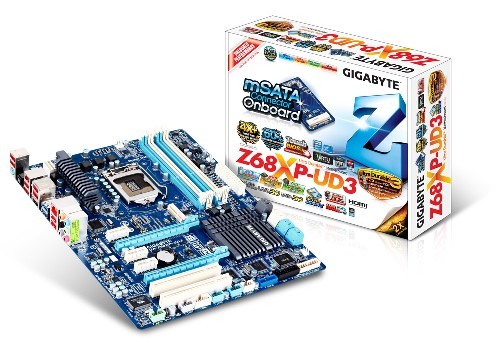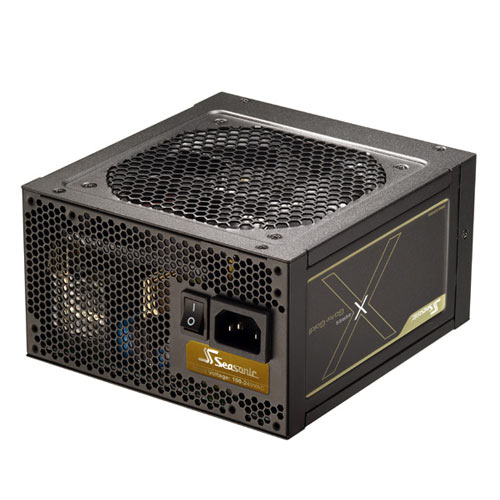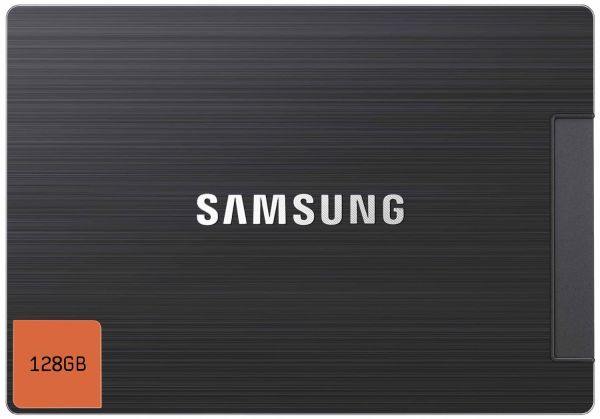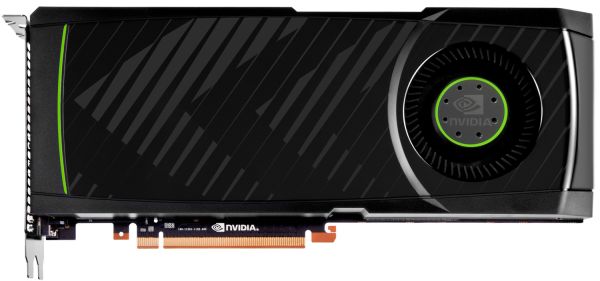Holiday 2011 Mainstream High-End Buyer's Guide
by Zach Throckmorton on December 9, 2011 12:00 AM EST- Posted in
- Guides
- AMD
- Intel
- Sandy Bridge
- CrossFire
- Sandy Bridge E
- Holiday 2011
- NVIDIA
Gamer's delight
While the HTPC on the previous page is designed for intensive video transcoding and therefore is built around a Intel Core i7-2600K with Hyper-Threading, this rig is devoted to gaming and therefore utilizes an Intel Core i5-2500K. You can see clearly from Bench that most games do not benefit from the 2600K's Hyper-Threading. Instead, it's a better idea to spend that $100 or so savings elsewhere if your primary consideration is gaming.
Because games do respond well to increased clockspeeds, and the Core i5-2500K is a multiplier unlocked CPU (so overclocking it is a breeze), we're recommending Corsair's H80 closed-loop CPU water cooler. All-in-one water-cooling kits like this Corsair are not only (generally speaking) great CPU coolers, they're also an easy introduction to more sophisticated water-cooling setups in case you're interested in exploring water-cooling at some point in the future. Jared recently reviewed the H60, H80, and H100—all of these fit in the Fractal Design Define R3 case we're recommending.

Gigabyte's GA-Z68XP-UD3 is an ATX form factor motherboard with all of the bells and whistles. It is a very capable overclocker and in my experience very reliable as well. While it's definitely not in the highest echelon of LGA 1155 motherboards, it is a solid higher-end mainstream motherboard. Perhaps of most interest to gamers, it supports both SLI and CrossFire—more on those in a moment.
Though not many current games benefit much from more than 8GB of DDR3, given the low prices of RAM and the larger budget, we're recommending two 8GB kits for 16GB total RAM. The G.SKILL Ripjaws X in the parts list below are great performers, but there are many other comparable kits.
Games don't always benefit much from an SSD, either, but again given the bigger budget, this build has a 128GB Samsung 830 Series SSD for its OS and application drive. That's enough space for plenty of both productivity and entertainment applications. I cannot stress enough how much general responsiveness and overall, day-to-day computing benefit from the addition of an SSD. Samsung's 830 Series drives are already developing a reputation for reliability, and as Anand found in his recent review, they also perform very well. In case your game—or media—library is very large (e.g. you play Rage!), the stalwart Samsung F3 1TB hard drive should be enough space for even the most prolific gamer.
The heart of any gaming rig is its GPU—or GPUs. The NVIDIA GTX 580 is the most powerful single GPU discrete video card available, and at $500, it's really pushing the envelope for "mainstream". You can see how it fares in Bench. The GTX 580 will play Crysis: Warhead at 1920x1200 resolution on gamer quality settings at an average of 60 frames per second. So, yes, it will run Crysis! But what if you're interested in SLI/CrossFire? $500 will buy one GTX 580—or two AMD Radeon HD 6950s. In general CrossFired 6950s outperform a single GTX 580, in some cases by a large margin. You can see how the two configurations compare on Bench. That said, I've yet to see a CrossFire (or SLI) setup that didn't have a few quirks—or downright aggravating issues. If you don't want to bother with SLI/CrossFire, the GTX 580 is your best bet (unless you want to plunk down even more money on a single card with dual GPUs, but I don't consider those much better than SLI/CF setups). If you are willing to put the additional time and effort into a CrossFire/SLI setup, you'll get a lot more bang for your buck with two Radeon HD 6950s.

SeaSonic's X850 is an extremely well-built 850W power supply capable of powering this impressive system whether you decide to go with a single GTX 580 or two Radeon HD 6950s. That said, the Bench test system hit 850W with two GTX 580s in SLI under Furmark—so if you plan to go with one GTX 580 initially and add a second card later, you will want to upgrade to a more powerful PSU. Finally, everything is housed in a Fractal Design Define R3. I recently recommended this case in the midrange buyer's guide and while there are other comparable cases like Corsair's 500R and Antec's P280, I like that the Fractal R3 is less expensive and, in my opinion, looks better.
| Component | Product | Price |
| CPU | Intel Core i5-2500K | $220 |
| CPU cooler | Corsair H80 | $94 |
| Motherboard | Gigabyte GA-Z68XP-UD3 ATX | $150 |
| RAM | (2) G.SKILL Ripjaws X 8GB (2x4GB) DDR3 1600 | $60 (total) |
| GPU | EVGA GeForce GTX 580 1536MB GDDR5 | $500 |
| GPU alternate | (2) XFX Radeon HD 6950 1GB GDDR5 | $500 (total) |
| SSD | Samsung 830 MZ-7PC128D/AM 128GB | $230 |
| HDD | Samsung Spinpoint F3 1TB | $150 |
| Power supply | SeaSonic X850 Gold 850W | $150 |
| Case | Fractal Design Define R3 | $110 |
| Optical drive | ASUS DRW-24B1ST/BLK/B/AS | $19 |
| Operating system | Microsoft Windows 7 Home Premium 64-bit (OEM) | $100 |
| Total: | $1783 | |
Next up, we're sacrificing graphics capability/gameplay ability for raw CPU speed. If you want an incredibly powerful computer, check the next page.












52 Comments
View All Comments
crackedwiseman - Friday, December 9, 2011 - link
Why would you use a GTX560? My complaint has little to do with performance - I don't have time to game in earnest, so that's not my objection. My problem lies in the lack of mult-display capabilities. For productivity purposes - particularly programming - a pair of 1080p screens is no longer cutting it for. With your config, the user is forced to invest either in expensive 2560*1600 screens or an entire new video card to get around this limitation - and with a base price of $2100 system, lack of expandability in this area is unforgivable.JarredWalton - Friday, December 9, 2011 - link
I don't know many people that use more than two displays, but obviously if that's your goal you can go with a different GPU. We mention no fewer than six potential video cards to consider on the "for work" system: GTX 560, HD 6850, GT 440, HD 6670, and a couple Quadro and FirePro options as well. It depends on whether you feel CUDA support or multi-monitor support is higher priority really; I'd personally go with CUDA (it really does help with Premiere), but the alternatives are there for a reason.A5 - Friday, December 9, 2011 - link
Yeah. I'd love to work somewhere where 3x 1080p monitors is commonplace...the standard issue at my workplace is 2x 1680x1050 monitors.DanNeely - Friday, December 9, 2011 - link
Same here, and it took about half a year of begging the helpdesk to get my 2nd upgraded from 1280x1024 to 1680x1050. I half suspect it was because I kept the ticket open long enough that one of the IT bosses OKed it because I was screwing up his metrics.crackedwiseman - Saturday, December 10, 2011 - link
I spend a lot of time programming in C/C++ with inline assembly (not exactly easy work, but it pays off here and there, especially when dealing with encryption and error correction algorithms). This is documentation-heavy work, and I often find myself dedicating as much screen-space to various documentations of the processors I'm optimizing for, compiler options, etc as I do to my IDE - screen space gets cramped fast. I got my multi-monitor setup for myself - doesn't cost to much these days, when 3+ monitors on a single card is not rare and 1080p monitors (admittedly crappy, but pixels are pixels) available for under $250 apiece. Certainly isn't cheap, but it's not prohibitive, and I'd swear by it as means of enhancing productivity for many compute-intensive tasks - I have some friends that do a lot of 3D design work, and they've gone to a tri-monitor setup without looking back.The way I figure it is, if I'm going to spend 6+ hours a day working with my computer, it had better be a nice experience - and being forced to tab through my information is not a nice experience.
apriest - Monday, December 12, 2011 - link
I have 3x 1920x1200 monitors on my workstation (photo/video editing), running on a first gen Core i7, P55 chipset, striped X25-M SSDs for boot drive, and a Radeon 5860, a pretty well-rounded machine. I occasionally play games on all three screens, but mostly older games like Far Cry 2 or Burnout Paradise which run pretty smooth at 5760x1200. I'm thinking of upgrading this spring to X79 and 6 or 8 core (if I could put a Xeon in there) to get some more horsepower and especially more RAM (32GB wouldn't be that expensive with 8 slots, and I'm maxed out at 16GB). I'd like CUDA support for some of my video rendering apps, but I'm discovering no cheap way of keeping my triple screens without going SLI or something. Doesn't appear that any nVidia card can run three screens unless it's a dual chip design or something, and then I wonder if two cards wouldn't be a better option anyway for more CUDA performance and better cooling? Just seems odd that my 2+yr old sub-$400 ATI card does something that can't be touched for that price today by nVidia, or am I missing something? I don't mind paying for something if the performance pays off and lets me bill out more, like the SSDs and 16GB I put in my current machine, but since my goal is not high end gaming I don't really want to go overkill on a $1000 video card setup either! Also, will PCI Express 3.0 video cards be out later this spring and should I just stick with my current ATI card until then? What do you guys think? Suggestions?BSMonitor - Friday, December 9, 2011 - link
Dang, are these drives still overpriced. Clearly these companies need other shops besides Taiwan.ggathagan - Friday, December 9, 2011 - link
Or Thailandfokka - Friday, December 9, 2011 - link
i'm happy to see you using a lian li pc 9f case in your productivity build! it's much better designed, than the a05fn dustin reviewed just yesterday and that's why i used it recently for my own build. really great case and in my opinion the best looking option out there!Araemo - Friday, December 9, 2011 - link
On the Z68 boards, how much will using Intel RST w/ a 64GB SSD suck compared to actually putting your OS and most common apps directly on the SSD?I have been waiting for 128GB SSDs to reach $100-ish before I buy one, because I don't think I can fit enough on a 64GB to be happy.. but if the caching works well enough, I generally only go between a couple games at a time, and a few other apps, all of that should fit in a 64GB cache, along with the OS and such.. that should be plenty to keep me snapping 90% of the time.. if the technology really works - so have any of the Anandtech guys used iRST on their main systems for an extended period yet to give a good review of it?